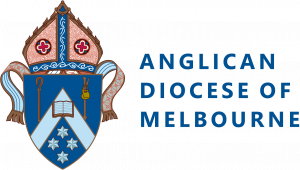
Charles Sherlock
8 March 2024
Tremper Longman III and John H. Walton. The Lost World of the Flood: Mythology, Theology, and the Deluge Debate. Downers Grove, IL: IVP Academic, 2018.
Many Bible readers assume that each passage can be read “straight off.” But what happens when this seems to clash with what they know is true? A potent example is the story of Noah and the flood (Genesis 6-9). We read:
All the high mountains under the whole heaven were covered … and everything on dry land in whose nostrils was the breath of life died (Genesis 7:19-22).
Yet no archaeological, geological, or cultural evidence supports such a universal flood. Hence the “deluge debate” which has given rise to the theological stance of “flood geology.” Flood geology essentially claims that the more ancient fossils were buried in the biblical flood a few thousand years ago, a claim which has implications for the age of the earth. This is an example of some Christians seeking to bridge the gap between the sciences and Scripture by introducing a particular theory.
US scholars Longman and Walton, affirm “that the Bible is indeed inerrant in all that it intends to teach”. And they face the issues involved steadily.
Successive chapters are set out as “Propositions”, these claims supported by argument and analysis. The approach sounds awkward, but it works here: the writing is clear, and directed consistently to the topic in hand.
Read more: We have the Bible today because of loving, hard labour
The first four propositions, on interpretive method, argue that biblical authority rests on the interpretation of the events portrayed, read against the events’ ancient background. In the case of the flood (Propositions 5-6), the use of hyperbole to make theological points is key.
The last four propositions (14-17) consider how biblical and non-biblical evidence can both be taken seriously. “Flood geology” is dealt with in a contribution by Stephen O. Moshier (Proposition 15). The final proposition reflects on how science and religion interact, noting other examples of events where the biblical text and sciences seem to conflict.
Propositions 1-6 and 13-17 frame the book. Reading them, I found myself wondering why such effort is put into “flood geology” by some Christians. The central propositions (7-11) however, are illuminating. The literary evidence for major floods in the Ancient Near East is set out clearly in seven, and then laid side by side with Genesis 6-9 in eight. In comparing these accounts, the authors show out the sharp contrast between the needy co-dependence of humans and the ancient gods and our graced dependence on the one true God. This analysis speaks loudly to how many Australians, even Christians at times, see faith in God as centred around our needs, rather than focussed on God’s purposes.
The flood is more than judgement and cleansing. The flood opens the way for sacred space to grow and flourish towards the full ordering of the new creation.
Proposition 9 is the book’s core: “A Local Cataclysmic Flood Is Intentionally Described as a Global Flood for Rhetorical Purposes and Theological Reasons.” It leads into propositions 10 and 11, which set out complementary “Theological Reasons.” The first, more “usual” reading, is that the flood is interpreted as divine judgment on “disorder.” But, it asks, where does this lead?
This book keeps a steady eye on God’s long-term gracious purpose of bringing order, initially from non-order – the tohu wabohu, “formless void,” of Genesis 1:2 – and far more, from the disorders of humankind and even nature. In this it fits the pattern of the preceding Lost World books. Beyond being merely God reacting to human sin, they argue Genesis 1–11 depicts God as truly creative. The flood is thus more than judgement and cleansing. The flood opens the way for “sacred space” to grow and flourish towards the “full ordering” (my term) of the new creation.
Read more: Bible translation turns a new leaf for 21st century
Propositions 12 and 13 reflect on two other episodes in Genesis 1-11: the “sons of God” story that precedes the flood, and the tower of Babel account that follows it. The authors argue that Genesis 1-11 overall forms the “backstory of the covenant with Abraham and his family that unfolds in Genesis 12-50” (p 178).
A concise conclusion rounds out the book’s overall argument very directly. It opens, “we have noted that events are not authoritative; interpretation of events by the biblical authors is what carries authority” (book authors’ emphasis). This raises two questions in my mind: Who interprets? (This brings the church, the communities in which the Bible is read, into play.) And how might those who read the Bible “straight off” find this claim?
The Lost World of the Flood is a wise book, respecting evidence and open to where the evidence leads. It will help anyone for whom Genesis 6-9 raises issues. These chapters are not as foundational as Genesis 1-3 for a Judeao-Christian worldview however. So, I recommend that Walton’s earlier Lost World books be read first, which I wish had been around when I began teaching theology 50 years ago!
The Reverend Dr Charles Sherlock AM taught Theology and Liturgy for five decades, chiefly at Ridley College, Melbourne. An Anglican deacon and priest, he was one of the drafters of A Prayer Book for Australia (1995). He is married to his co-theologian the Reverend Dr Peta Sherlock, living in active retirement in Trentham, Victoria.
For more faith news, follow The Melbourne Anglican on Facebook, Instagram, or subscribe to our weekly emails.






